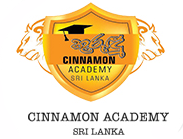Get to Know Us
About CTA
Location – Located in the Galle District Which has the hectares in Sri Lanka in the Balapitiya electorate district in the picturest Cinnamon growing area in Kosgoda ,
and neighboring Balapitiya regarded as the birthplace of the prized spice. The Cinnamon Training Academy (CTA), which in itself is currently in its tenth year and is recognized by WTO-STDF as a successful public-private cooperation, is deliberately positioned within.
CTA - Cinnamon Training Academy (CTA) Limited, Public Private Partnership (PPP) Company with limited liability was incorporated in Sri Lanka on 13th June2006 and registered under the Companies Act. The Shareholders of the company are Producers, Dealers & Exporters members of the Ceylon Cinnamon Association (CCA) and The Spice Council (TSC) who are dedicated for the development of the Cinnamon Industry.
Donors and Investors - CTA was financially supported by World Trade Organization/Standard and Trade Development Facility (WTO/STDF), European Union (EU), United Nations Industrial Development Organization (UNIDO), The International Federation of Essential Oils and Aroma Trades (IFEAT), Government of Sri Lanka – Industrial Ministry / Export and Development Board (MOI – EDB), Sri Lankan Banks and Sri Lanka Export Credit Insurance Corporation (SLECIC). And also there were 19 investors invested for the CTA.

15+
Years Experience
History Of
Ceylon Cinnamon -
Cinnamon history dates back to around 2800 B.C. It is even mentioned in the Bible. The pride of the place cinnamon occupied in history is well documented. According Dr. K. D. G. Wimalaratne, former director of Archives, it is recorded during the reign of Egyptian Pharaoh Queen Hatshepsut in heliographic records in 1500 B.C. Which is over 3500 years ago.The famous Roman emperor Nero burnt as incense one year’s supply of Cinnamon as a penance on the death of his queen. Pliny, the Roman elder, records that in Rome cinnamon was twice the value of silver. According to Encyclopaedia Britannica, cinnamon was once more valuable than gold. Cinnamon was utilized by the Egyptians as a medication, a food enhancer, and in the embalming process. It was utilized in cooking in Mexico, Asiatic countries, Arabia, and North Africa. It was primarily utilized by the Romans in perfumes and aromas, as well as to flavor beverages.
The Portuguese discovered Ceylon's real cinnamon in the early 16th century, and they brutally controlled the trade. The demand for cinnamon grew, prompting the Dutch to fight the Portuguese until the cinnamon trade in Ceylon was invaded and controlled by Holland in the mid-seventeenth century. The Cinnamon Monopoly was eventually taken over by the Dutch. It also reveals the history of cinnamon in Sri Lanka. According to the Upcountry-Dutch agreement signed between Sri Lankan King Sri Keerthi Sri Rajasinghe and the Dutch government on February 14, 1766, the Dutch were allowed to cut and peel cinnamon in certain areas of the country in exchange for a promise from the Dutch to protect the kingdom from foreign invasion.

Vision
To be the Institute of Excellence in providing training and skills for jobs pertaining to Cinnamon Industry in Sri Lanka and finally to be the center of Excellence.

